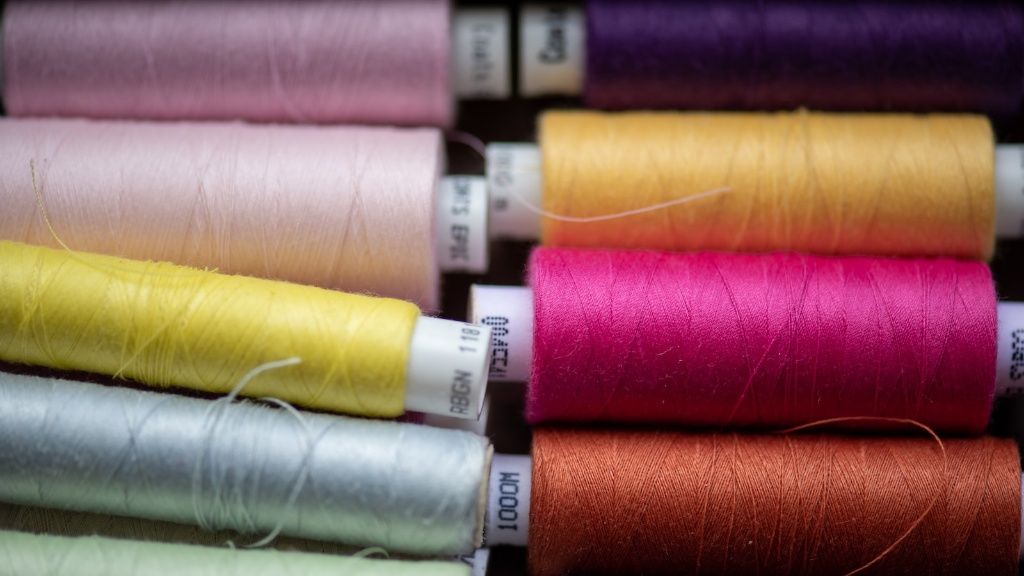Prepare the Sewing Machine and the Bobbin
Before you can put the bobbin into the sewing machine, it is important to prepare both the sewing machine and the bobbin. First, set up the sewing machine according to the instruction manual that came with it. This will ensure that you don’t damage either the machine or the bobbin during the process. Next, it is important to check that the bobbin thread and the sewing machine are compatible. Look at the sewing machine’s manual or contact the manufacturer to check this.
Once you have set up the machine and checked compatibility, wind the bobbin according to the manufacturer’s instructions. This is important as the bobbin cannot be over-wound or it may not fit into the machine or not work properly. Wind it to a consistent tension, not too tight and not too loose.
Find the Bobbin Holder
To find the bobbin holder, look for a metal case on the front or side of the sewing machine. This is the bobbin holder, and it will be visible when the bobbin is removed from the case. It is also important to familiarise yourself with the bobbin holder case and its parts to ensure that the bobbin is inserted correctly.
Remove the Bobbin Holder
The first step to inserting the bobbin is to remove the bobbin holder from the sewing machine. Depending on the model of your sewing machine, the bobbin holder may be removed by pushing a button or lever. Alternatively, many sewing machines have a hooking system which requires you to press down on the bobbin holder before it can be removed. Once the bobbin holder is removed, carefully remove the old bobbin from the holder.
Place the Bobbin into the Holder
To place the bobbin into the holder, align the thread on the bobbin so that it goes in the same direction as the bobbin holder. Then, turn the bobbin case counterclockwise to wind the thread onto the bobbin holder. Once the bobbin is in the holder, securely replace the holder by pressing down on it. Make sure the bobbin is properly secured in the holder, otherwise the machine could malfunction.
Adjust the Bobbin Tension
To ensure that the machine functions properly the tension of the bobbin thread must be adjusted properly. Look for the bobbin tension adjuster, usually located near the bobbin case, and use a small screwdriver to adjust the tension. The tension should be as tight as possible but still able to turn the bobbin without aid.
Insert the Bobbin
After the bobbin has been adjusted, carefully insert it into the sewing machine. The bobbin holder can be reattached either by pushing down the bobbin case or pushing a lever that locks the bobbin in place. If you are using a hooking system, ensure that the bobbin is securely latched in place.
Test the Bobbin
Once the bobbin is securely in place, test it by gently pulling on the thread. If the bobbin thread is too tight or too loose, it must be adjusted as described above. Once the tension has been adjusted, test it again by gently tugging on the thread. Finally, check that the bobbin moves freely in the holder, as any obstruction can cause the machine to malfunction.
Practice Techniques with the Bobbin
Now that the bobbin has been successfully inserted, it’s time to practice some sewing techniques with it. This will ensure that you are familiar with the machine and that the bobbin is functioning correctly. Start by practicing tension, seam allowance, and stitch regulation using the bobbin, then move onto more advanced techniques such as embroidery and zigzag stitching.
Clean and Maintain the Sewing Machine
To keep the sewing machine in top condition, it is important to clean and maintain it regularly. Be sure to consult the instruction manual or contact the manufacturer to find out how to properly clean and maintain your machine. Clearing dust and lint from the bobbin holder and oiling any hinges or springs can help to ensure a smoother stitch and a longer lasting machine.
Understand the Threading Techniques
Threading the sewing machine is one of the most important steps in sewing. Understanding the different threading techniques and the parts of the machine that the thread needs to go through can be helpful for mastering bobbin operation. Look for diagrams of threading techniques on the manufacturer’s website or in the instruction manual and practice threading the machine each time the bobbin is changed.
Master Sewing Machine Trouble Shooting
Although it is unlikely that you will run into any problems when inserting the bobbin, it is important to know some basic sewing machine trouble shooting techniques. This can save you a lot of time and money in the long run. Common sewing machine problems can range from not being able to pick up the bobbin thread to poorly stitched seams. If something doesn’t seem right, refer to the machine manual to try to diagnose and correct the issue.



